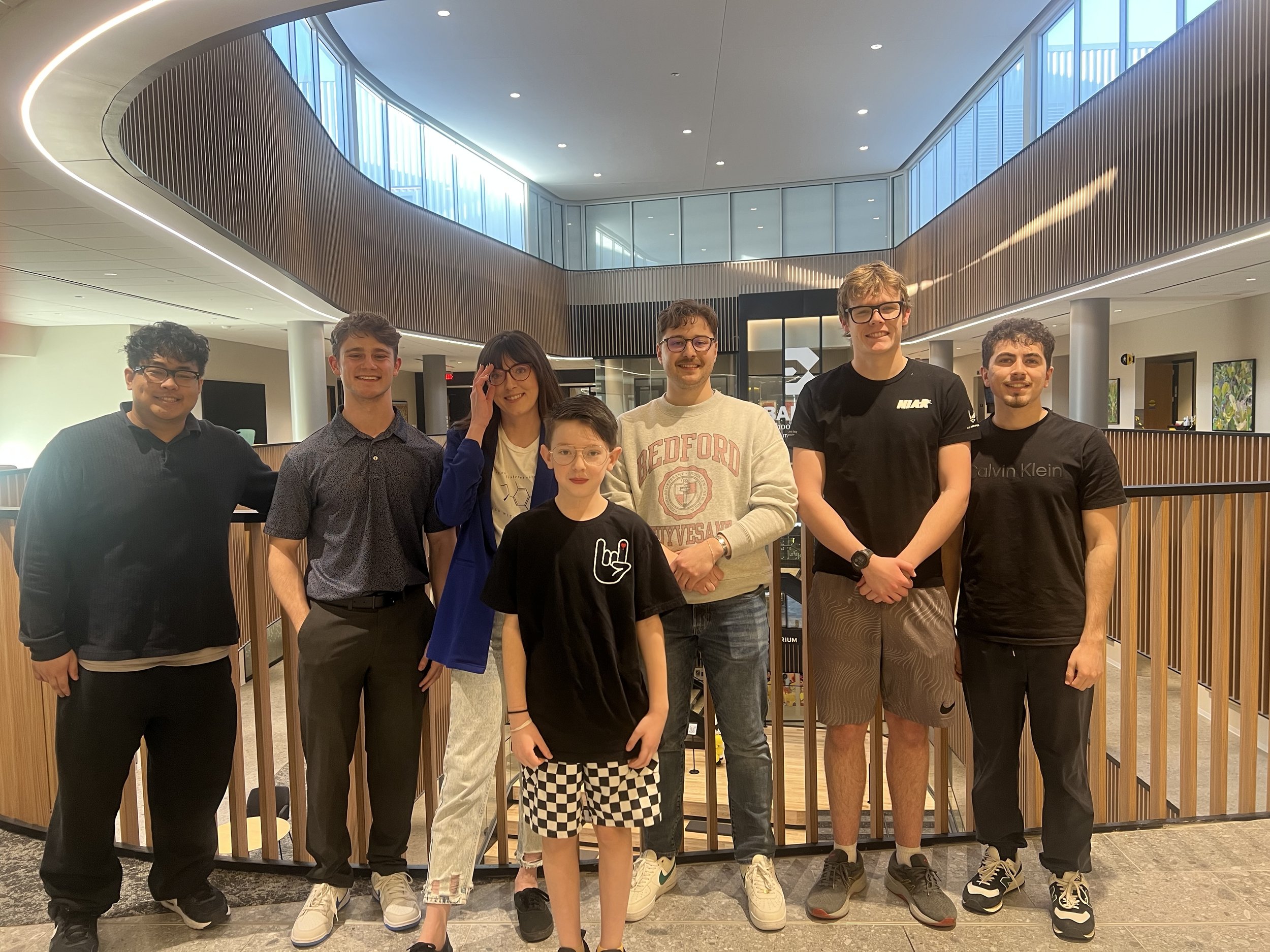Who we are
We are a team of four Biomedical Engineering students from Wichita State University, united by a shared goal: to make life safer and easier for people living with Type 1 diabetes. Our project was inspired by a personal connection—one of our teammates has a younger brother who was diagnosed with Type 1 diabetes at a young age. His daily challenges navigating blood glucose management deeply motivated us to develop a smarter, more supportive solution.
What began as a senior design project quickly evolved into something greater. We envisioned a hybrid closed-loop insulin pump system that could not only automate insulin delivery based on real-time glucose readings but also integrate safety checks, cloud analytics, and personalized user alerts—all in a compact, affordable, and user-friendly device.
We started by researching current CGM and insulin pump technologies, identifying the gaps in accessibility, automation, and user comfort. From there, we moved into prototyping—using a Raspberry Pi as our central controller, developing Python-based control logic, and integrating components like a CGM sensor, vibration motor, manual bolus button, and a seven-segment display for real-time glucose feedback.
As we refined the design, we focused heavily on patient safety: preventing insulin delivery during low glucose events, building in multiple alert systems, and ensuring data encryption during cloud syncs. Our work culminated in a portable system that can be monitored remotely through a custom Flask/React application, offering both real-time control and long-term insights for users and caregivers alike.
This project is more than just a grade for us—it’s a meaningful attempt to make life with diabetes a little more manageable, especially for families like ours.
Our Journey
As we identified the critical gap in Type 1 diabetes management—the lack of seamless integration between continuous glucose monitors (CGMs) and insulin pumps—we turned to experts in the field for direction. Through a key partnership with Wichita Diabetes and Endocrinology, we began shaping a solution grounded in real-world feedback.
To understand what patients actually need from pump therapy, we designed a survey and distributed it via an educational brochure in collaboration with Julia Bippert, the clinic’s in-house Certified Pump Trainer. Her insights, along with those from actual patients, helped shape the core features of our early prototypes.
One parent we spoke to described how her child would faint at the sight of needles. This validated our decision to adopt a needle-free design using high-pressure microjet technology to deliver insulin painlessly—eliminating needle fear and reducing site trauma.
Our new approach also includes a rotating injection site mechanism. Since rapid-acting insulin must be replaced every 3 days due to cross-linking into polymers, our design allows the user to change insulin reservoirs with the press of a button. The device then automatically rotates the injection point to prevent scarring, extending wearability up to 30 days—10 times longer than most market options.
Key design features include:
Vibration motor instead of repetitive alarms to avoid "alarm fatigue"
LED screen for real-time glucose monitoring without needing a phone
Manual bolus control panel, enabling users to administer insulin in precise 1 mL or 2 mL increments if the phone is unavailable
Bluetooth-connected mobile app, linking to a secure cloud database for parent/nurse monitoring and long-term analytics
To enhance usability and long-term care, our design integrates Automated Patient Glucose (APG) Reports directly into the cloud-connected platform. These reports transform raw CGM data into clear, actionable summaries—highlighting trends, patterns, and potential concerns over time. This feature helps parents, caregivers, and clinicians monitor progress remotely, reduce guesswork, and make more confident decisions about insulin dosing and daily management.
The Final Design
Our first prototype incorporated a large LED display for real-time blood glucose tracking and a reinforced polymer shell to ensure durability during daily use. At this stage, our focus was on functionality—making sure the system could display CGM data accurately and withstand wear and tear. However, once assembled, it became clear that this design wasn’t well-suited for our target users. The device was physically bulky, making it uncomfortable for children to wear discreetly.
The rigid form factor lacked flexibility, and the oversized display, while visually effective, contributed to unnecessary weight and power consumption. It also posed limitations for battery life and portability, two critical considerations for pediatric patients who need to wear the device continuously. Additionally, its size and appearance made it socially intrusive, which can affect a child's confidence and willingness to use the device openly. These issues pushed us to re-evaluate not just the physical design, but who we were really designing for—and that clarity guided every iteration that followed.
This system empowers caregivers—especially those new to diabetes—with a more intuitive interface, minimizing the 300+ micro-decisions Type 1 diabetic individuals make daily around eating, insulin, and activity. Our CGM integration offers higher-fidelity readings, improving both safety and peace of mind.
What began as a deeply personal mission has evolved into a full-featured, patient-first medical device that addresses the emotional, clinical, and technological challenges of living with Type 1 diabetes.
Engineering Open House
Contact us
Interested in working together? Fill out some info and we will be in touch shortly. We can’t wait to hear from you!













